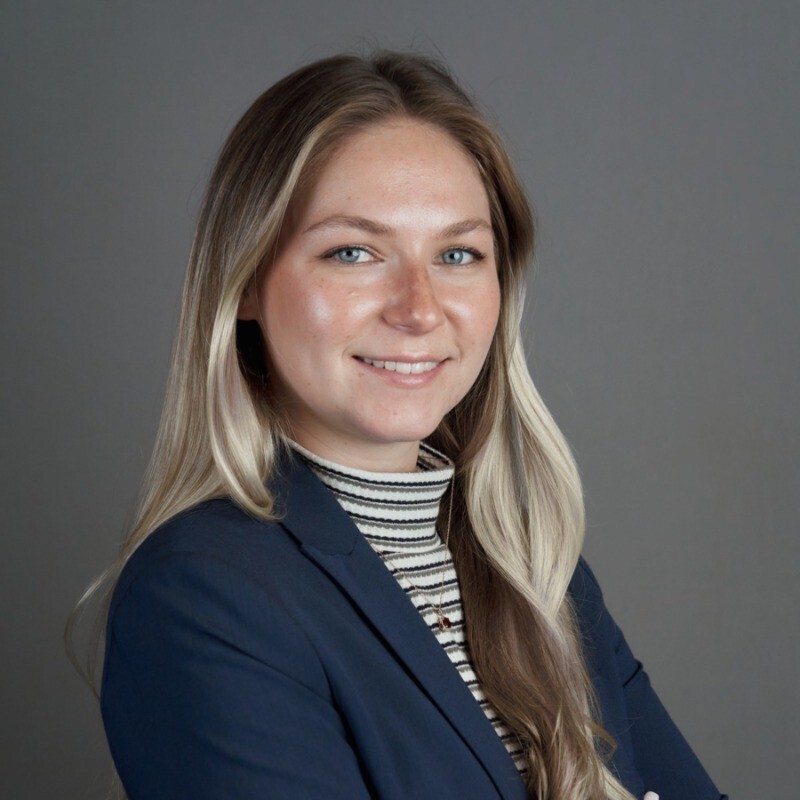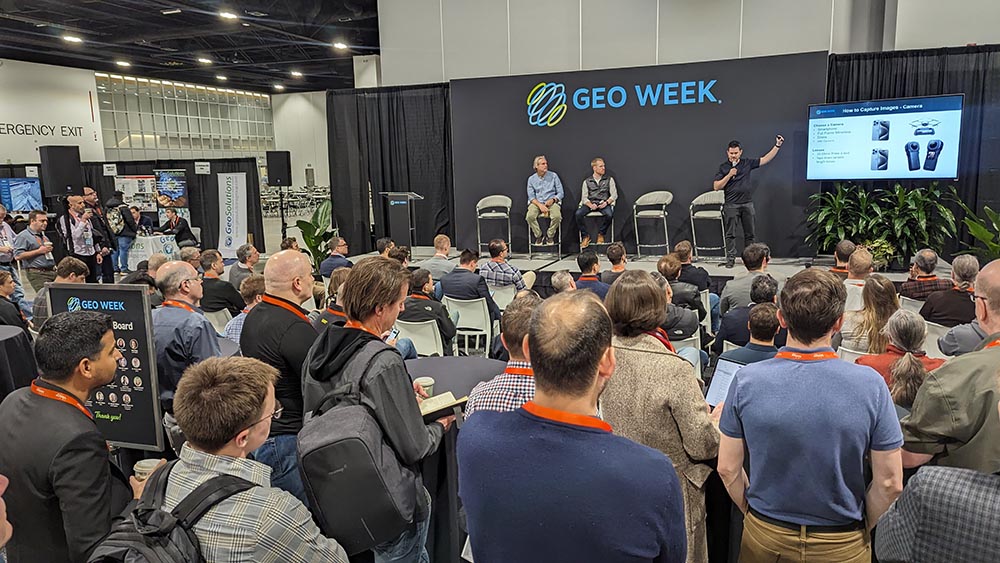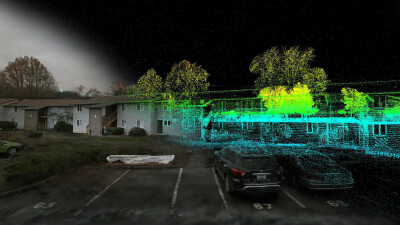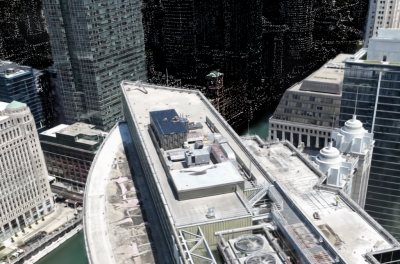Geo Week 2024's Exhibit Hall Theater was, for the second year in a row, home to a fascinating conversation about NeRFs, this year in the “NeRFs for Geospatial and Beyond” session. This year’s discussion featured insights from Jonathan Stephens of EveryPoint, Jason Laan of Laan Labs, and Ben Stocker of Skender. Despite NeRF technology being new to the geospatial industry, it clearly caught the attention of Geo Week attendees as the exhibit hall theater overflowed with professionals eager to learn about this new 3D rendering tool.
We’ve previously outlined how organizations like Alteia are leveraging NeRFs in inspection workflows, and the power of the technology is easy to see. While still in its nascent stages, many are experimenting with the practical applications of it in a way that is creating value right now while also creating pathways to greater opportunities in the near future.
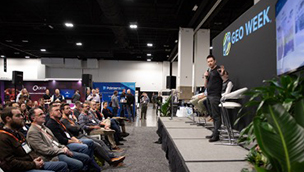
This actual and potential value is something all of the presenters outlined as they broke down how Gaussian Splat technology might be ahead of the curve, even more so than NeRFs. Distinctions between NeRFs and Gaussian Splats were also detailed, as NeRFs are rendered offline with high processing time and high cost but have good visual acuity. That’s distinct from Gaussian Splats, which are more cost-friendly and are rendered in real-time. They have good visuality but poor dimensionality.
To fully demonstrate the potential of the technology, Stocker took a quick scan of the area with his phone and processed it with Luma Labs, creating a Gaussian Splat of the Exhibit Hall Theater. The 3D rendering was ready to share with a simple link within an hour of the scan. This rendering allows you to see the room from any angle, a tool that Stocker has be able to utilize on construction sites to assess progress and problem areas.
This rendering is available to experience below:
While this technology is in its infancy, the uses for both 3D capture tools have great potential. Companies like Alteria are already incorporating them into their workflows for inspections of power lines and cell towers, and that’s just the beginning.
“This technology is advancing quickly, it’s very exciting to see how it will be adopted,” Laan told Geo Week News.

